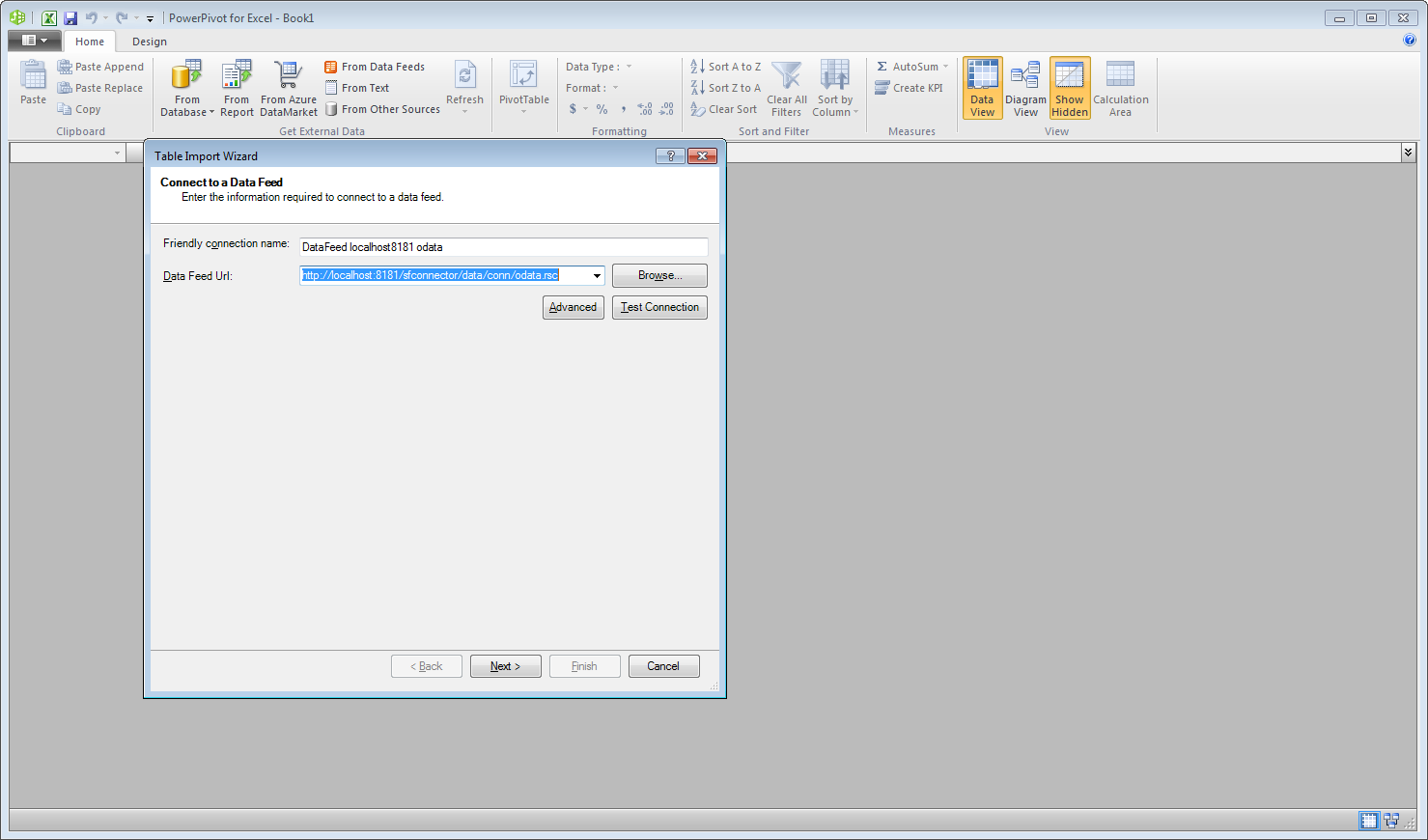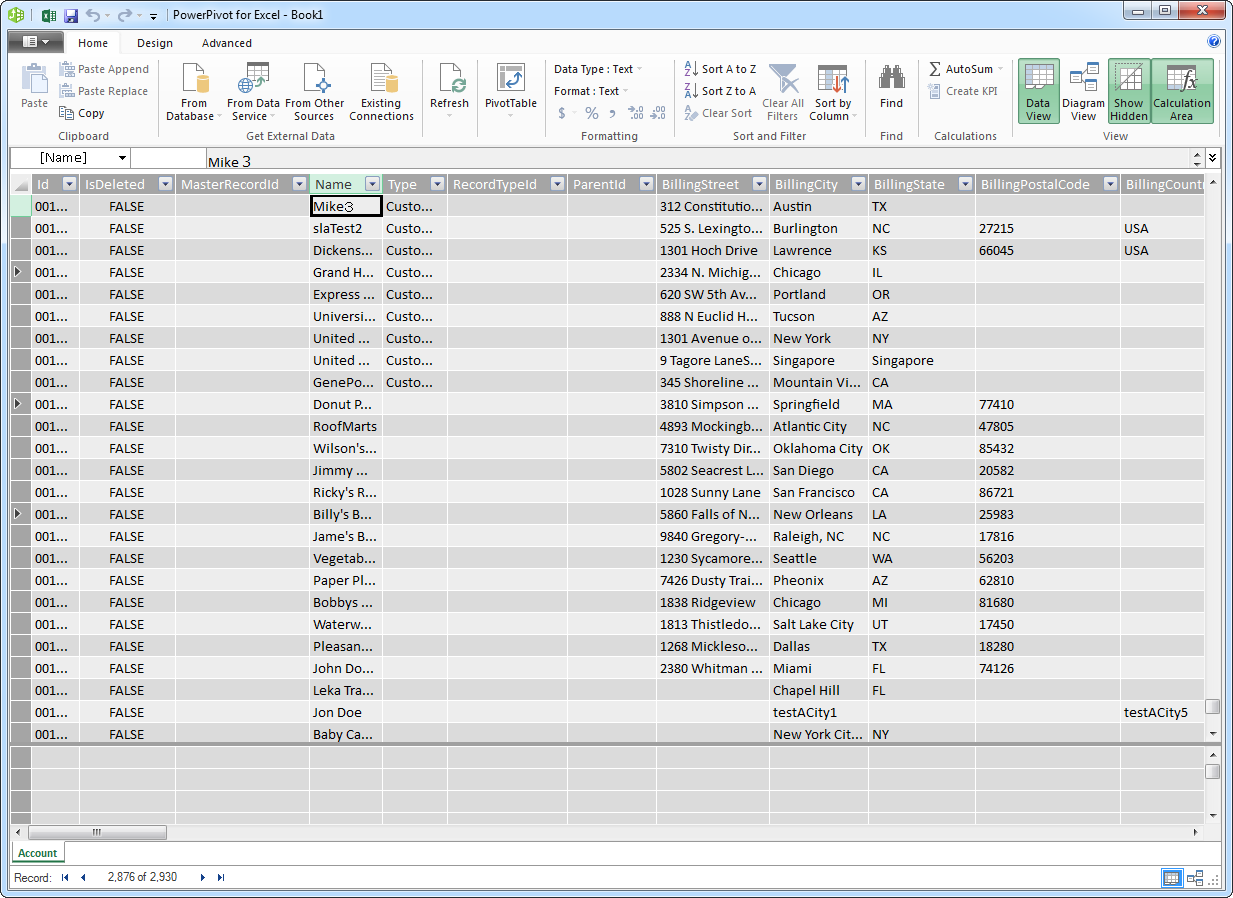Model Context Protocol (MCP) finally gives AI models a way to access the business data needed to make them really useful at work. CData MCP Servers have the depth and performance to make sure AI has access to all of the answers.
Try them now for free →Use the API Server and Smartsheet ADO.NET Provider to Access Smartsheet Data in Microsoft PowerPivot
Use the API Server to connect to live Smartsheet data in the PowerPivot business intelligence tool.
This article will explain how to use the API Server and the ADO.NET Provider for Smartsheet (or any of 200+ other ADO.NET Providers) to provide Smartsheet data as OData services and then consume the data in Microsoft Excel's PowerPivot business intelligence tool. Follow the steps below to retrieve and edit Smartsheet data in Power Pivot.
About Smartsheet Data Integration
CData provides the easiest way to access and integrate live data from Smartsheet. Customers use CData connectivity to:
- Read and write attachments, columns, comments and discussions.
- View the data in individuals cells, report on cell history, and more.
- Perform Smartsheet-specific actions like deleting or downloading attachments, creating, copying, deleting, or moving sheets, and moving or copying rows to another sheet.
Users frequently integrate Smartsheet with analytics tools such as Tableau, Crystal Reports, and Excel. Others leverage our tools to replicate Smartsheet data to databases or data warehouses.
Getting Started
Set Up the API Server
Follow the steps below to begin producing secure Smartsheet OData services:
Deploy
The API Server runs on your own server. On Windows, you can deploy using the stand-alone server or IIS. On a Java servlet container, drop in the API Server WAR file. See the help documentation for more information and how-tos.
The API Server is also easy to deploy on Microsoft Azure, Amazon EC2, and Heroku.
Connect to Smartsheet
After you deploy the API Server and the ADO.NET Provider for Smartsheet, provide authentication values and other connection properties needed to connect to Smartsheet by clicking Settings -> Connections and adding a new connection in the API Server administration console.
Smartsheet uses the OAuth authentication standard. To authenticate using OAuth, register an app to obtain the OAuthClientId, OAuthClientSecret, and CallbackURL connection properties.
However, for testing purposes you can instead use the Personal Access Token you get when you create an application; set this to the OAuthAccessToken connection property.
You can then choose the Smartsheet entities you want to allow the API Server access to by clicking Settings -> Resources.
Additionally, click Settings -> Server and set the Default Format to XML (Atom) for compatibility with Excel.
Authorize API Server Users
After determining the OData services you want to produce, authorize users by clicking Settings -> Users. The API Server uses authtoken-based authentication and supports the major authentication schemes. Access can also be restricted based on IP address; by default, only connections to the local machine are allowed. You can authenticate as well as encrypt connections with SSL.
Import Smartsheet Tables in Power Pivot
Follow the steps below to import tables that can be refreshed on demand:
- In Excel, click the PowerPivot Window icon in the PowerPivot tab to open PowerPivot.
- Click Home -> Get External Data -> From Data Service -> From OData Data Feed.
-
Add authentication parameters. Click Advanced and set the Integrated Security option to Basic. You will need to enter the User Id and Password of a user who has access to the CData API Server. Set the password to the user's authtoken.
-
In the Base URL box, enter the OData URL of the CData API Server. For example, http://localhost:8032/api.rsc.

-
Select which tables you want to import and click Finish.

You can now work with Smartsheet data in Power Pivot.

